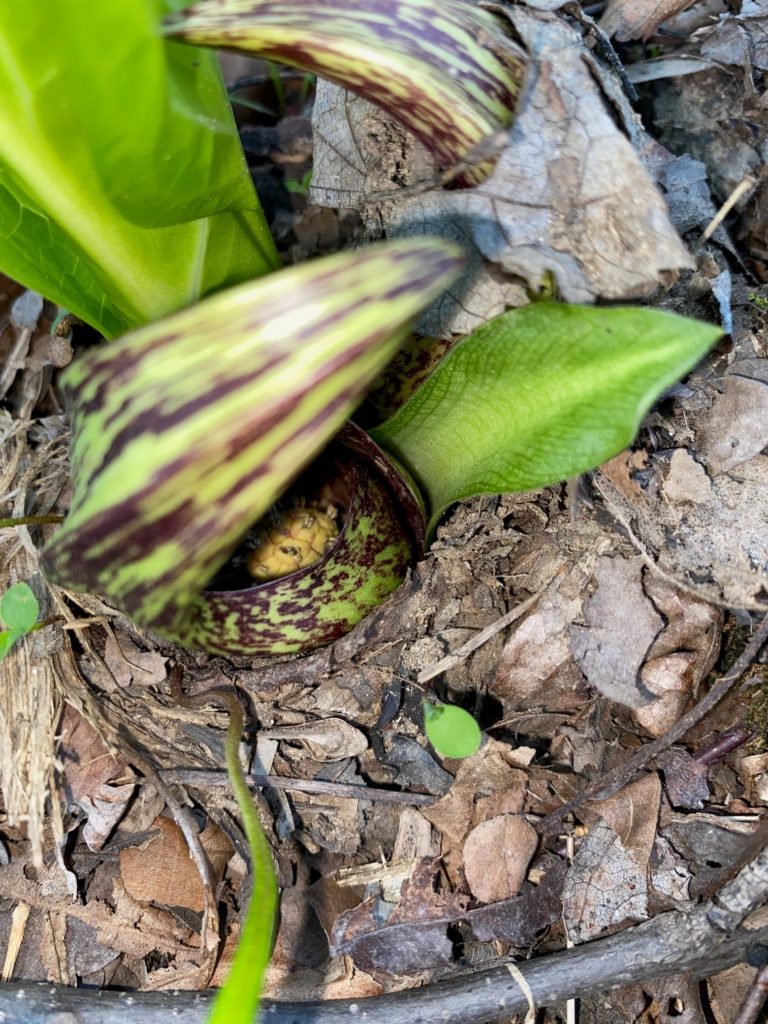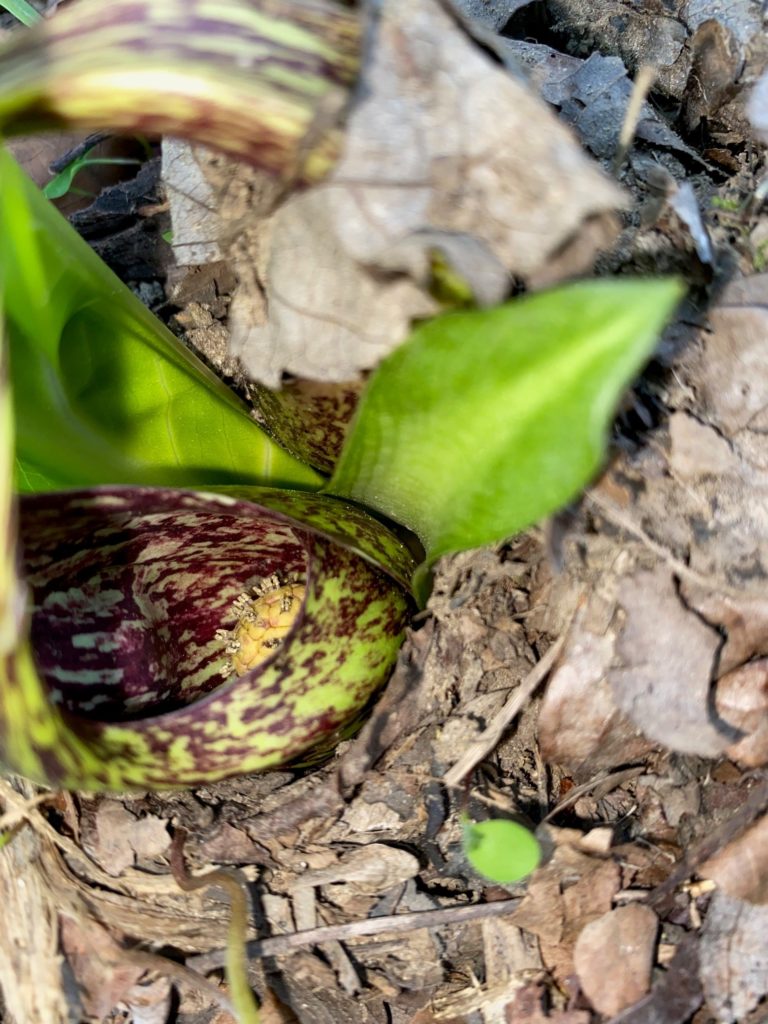What’s in Bloom | Eastern Skunk Cabbage
February 14, 2022
Eastern skunk cabbage (Symplocarpus foetidus) is a perennial rhizomatous herb native to Virginia and found throughout most of the state. Both its common name and scientific names harken to the fact that this plant exudes a foul skunk-like odor. The species name foetidus is derived from Latin roots meaning “to stink” or “offensive odor.” This odor has a useful purpose for the plant as it attracts its intended pollinators such as flies and carrion beetles, both of which are drawn to rotting odors. It also serves to deter potential predators that may otherwise browse on the plant.
Eastern skunk cabbage is generally common throughout Virginia and is found in seepage swamps, bogs, saturated floodplains and is restricted to habitats with abundant groundwater and wet soils. This species is found throughout Eastern North America as far south as North Carolina and Tennessee (where it is considered endangered). There is a similar plant called Western skunk cabbage (Lysichiton americanus) found in the Northwestern US.
Eastern skunk cabbage is one of the earliest native blooming wildflowers in our region, with blooms emerging as early as February, whereas the cabbage-like leaves do not begin to emerge until April or May. Small and tightly packed yellow flowers are found on a round spadix housed underneath maroon and green spathes (hoods). The spathes emerge first in winter, even through snow, due to heat given off by the plant’s respiration. Spathes help to hold in the heat to regulate temperatures for the flowers and to also vaporize the scent and attract pollinators.
Eventually seeds are formed and dispersed by small mammals, birds, and floods. Broad leaves up to 1-2 ft long emerge after flowering and die back in early fall. The roots and rhizomes reach deep into the damp soil and individual plants can live up to 20 years.
Sources: Flora of Virginia; https://www.fs.fed.us/wildflowers/plant-of-the-week/symplocarpus_foetidus.shtml ; https://www.nwf.org/Educational-Resources/Wildlife-Guide/Plants-and-Fungi/Skunk-Cabbage


